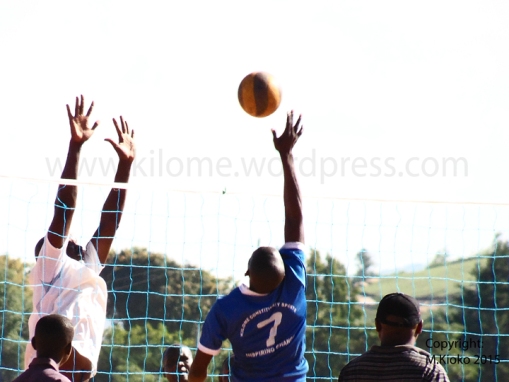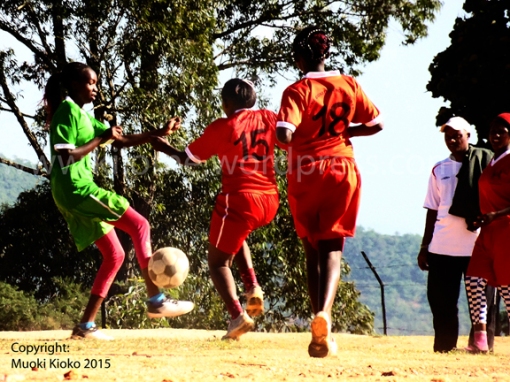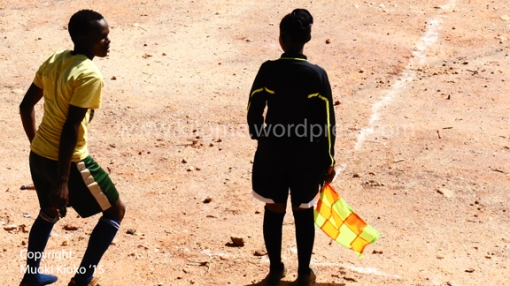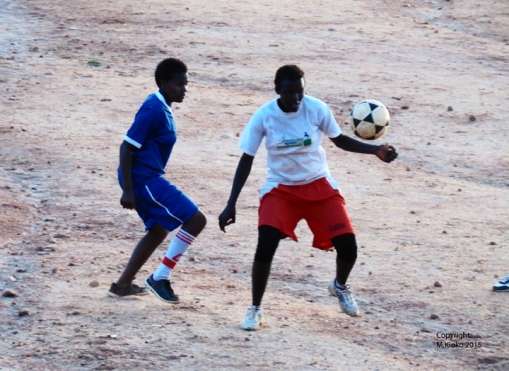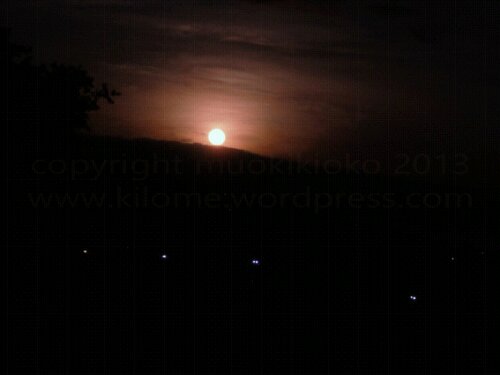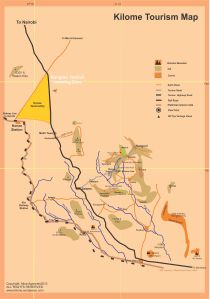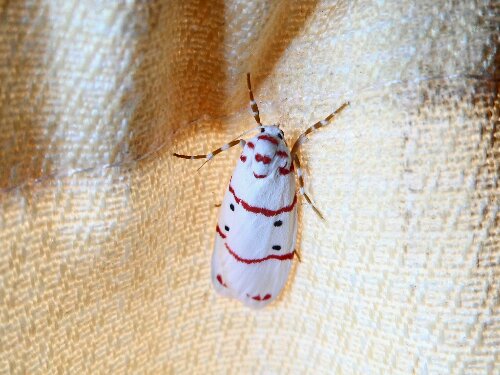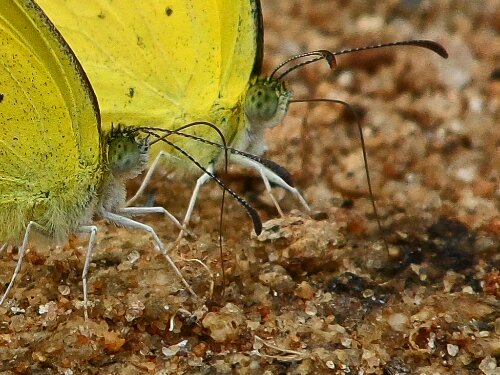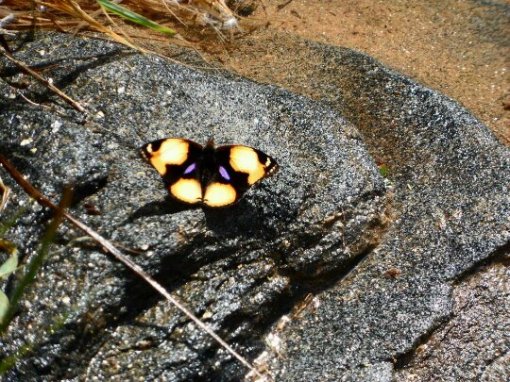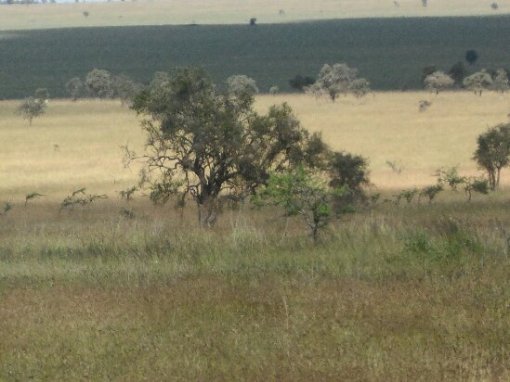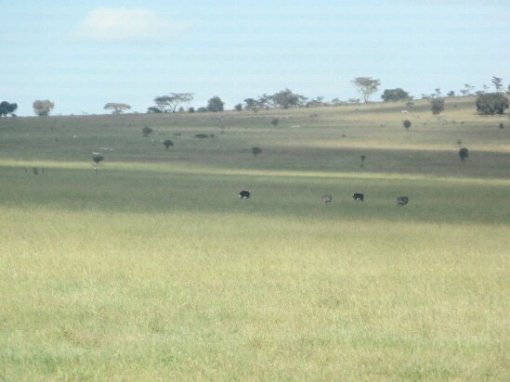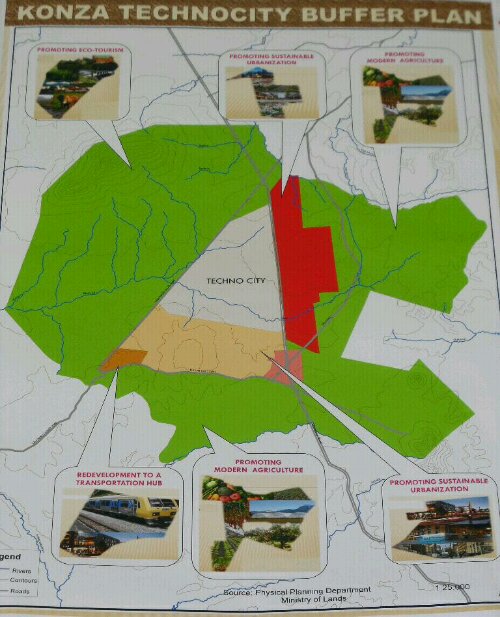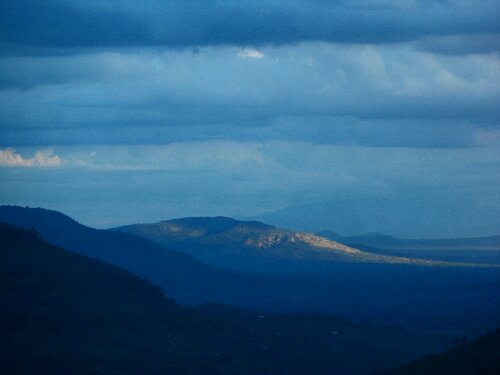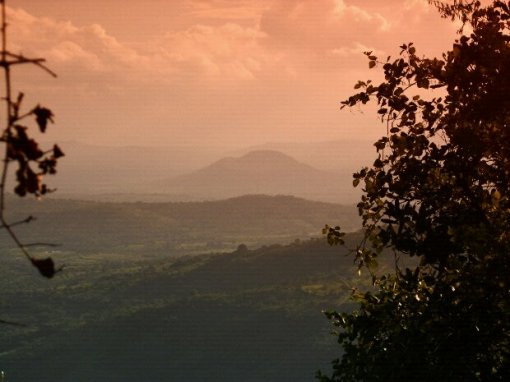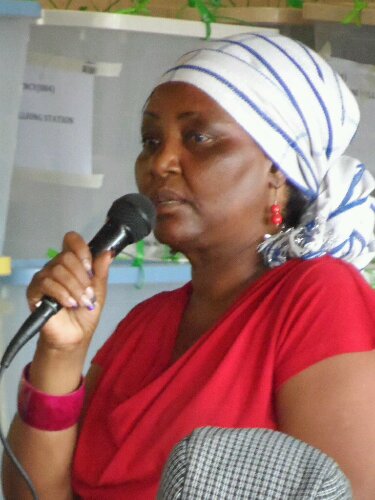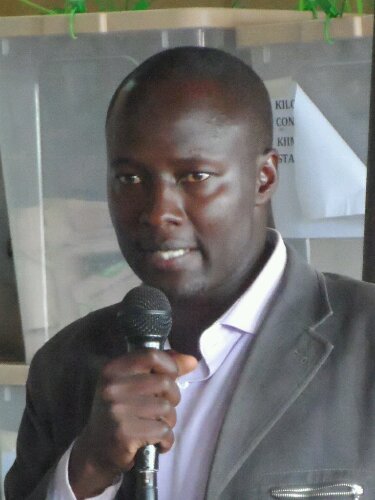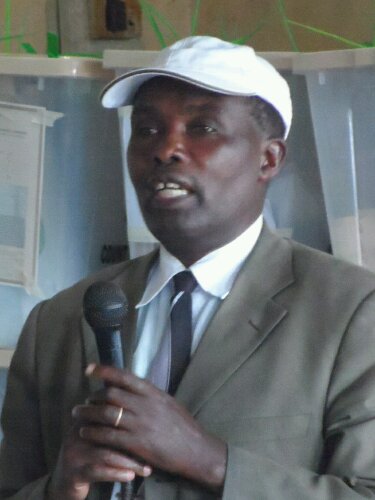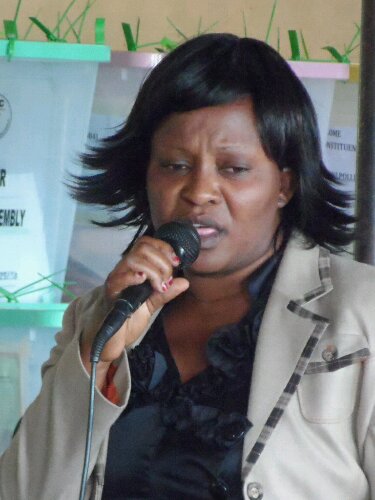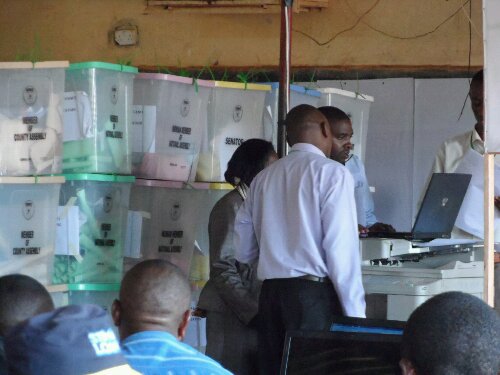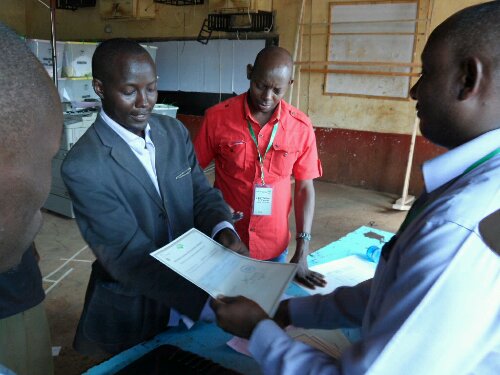Feeds account for more than 80 per cent of poultry production costs. A farmer who manages to bring down this cost to about 50 to 60 per cent stands to make good returns in the poultry business. Farmers who formulate and make their own feeds at home save an average of Ksh 840 for every 70kg
bag of chicken feed, which is a great saving for those doing commercial production.
Below, we give farmers some guidance on what they need to be able to formulate their own feeds and cut down their production costs:
Preparing layers chick mash (1-4 weeks)
Since they are growing, chicks require feed with Digestible Crude Protein (DCP) of between 18 to 20 per cent. Amino acids are important additives in all feeds in order to make a complete feed for all animals. For hybrid chickens the addition of amino acids is very important to maintain a balanced
diet for fast growth.
The following ingredients can be used to make a 70 kg bag of chick mash:
31.5kg of whole maize
9.1kg of wheat bran
7.0 kg of wheat pollard
16.8 kg of sunflower (or 16.8 kg of linseed)
1.5 kg of fishmeal
1.75 kg of lime
30g of salt
20g of premix Amino acids
70g of tryptophan
3.0g of lysine
10g of methionine
70 g of threonine
50g of enzymes
60g of coccidiostat
50g of toxin binder
To make a 70 kg bag growers feed (1 to 8 weeks)
It is important to remember that pullets or young layers should be provided with feed having a protein content of between
16 and 18 per cent. Such feed makes the pullet to grow fast and prepare for egg laying. Layers’ feed should never be fed to chickens younger than 18 weeks as it contains calcium that can damage their body organs such as kidneys (they can develop kidney stones), which interfere with egg production and also shorten their lifespan. Grit (sand) should be provided to growers that are not on free range to aid in digestion.
Making a 70 kg bag of layers’ mash (18 weeks and above)
34kg of whole maize
12kg of Soya
8kg of fishmeal
10kg of maize bran, rice germ or
wheat bran
6 kg of lime
175g premix Amino acids
70g lysine
35g methionine
70kg tryonine
35g tryptophan
50g toxin binder
Layer feed should contain a
Digestible Crude Protein (DCP) content of between 16-18 per cent. The feed should contain calcium for the formation of eggshells (Laying hens that do not get enough calcium will use the calcium stored in their own born tissue to produce eggshells). Layer feed should be introduced at 18 weeks.
Formulating a 70 kg bag of broiler feed
Broilers have different feed requirements in terms of energy, proteins and minerals during different stages of their growth. It is important that farmers adapt feed rations to these requirements for maximum production. Young broilers have a high protein requirement for the development of muscles,
feathers, etc. As the broilers grow, their energy requirements for the deposit of fat increase and their protein requirements decrease. They
therefore require high protein content in their starter rations than in the grower and finisher rations.
Broilers should have feed that has between 22 – 24 per cent DCP. The following guidelines can help the farmer to make the right feed at each stage of growth:
Preparing broiler growers feed (70kg) A drum mixer is good for mixing home made feeds
10kg of whole maize
16.7kg of maize germ
13.3kg of wheat pollard
10 kg wheat bran
6 kg of cotton seed cake
4.7kg of sunflower cake
3kg of fishmeal 2kg of lime
3.4kg of soya meal
40g of bone meal
10g of grower PMX
5g of salt
5g of coccidiostat
5g of Zincbacitrach
Broiler starter feed (1-4 weeks)
40kg of whole maize
12kg of fishmeal ( or omena)
14kg of soya bean meal
4kg of lime
70g of premix
Amino acids
35g of lysine
35g of threonine
Important tips on feed preparation
- – When making home made feed rations, it is important to do experimental trials, by isolating a number of chickens, feeding them and observing their performance. If the feed rations are right, the broilers will grow fast and layer will increase egg production (at least 1 egg after every 27 hours).
- – Farmers should be very careful with the quality of feed ingredients or raw materials. Chickens are very sensitive to feeds that contain mycotoxins which are present in most of the raw materials. Never use rotten maize ( maozo) to make chicken feed.
- – Buy quality fishmeal from reputable companies. If omena is used the farmers must be sure of its quality; most of the omena in the open-air markets may be contaminated.
- – It is very important to mix all the micronutrients (amino acids) first before mixing with the rest of the feed.
- – For mixing, farmers are advised to use a drum mixer (many jua kali artisans can make one). Never use a shovel to mix feed because the ingredients will be unevenly distributed.
- – Spoilt maize is the main source of animal feed in Kenya. Such feed is dangerous as it ends up in human food in eggs, meat and even milk from dairy cows and goats.
- – It is easier for small-scale farmers working in groups to buy some of the ingredients such as pre-mixes and amino acids after which they can
share the product according to each one’s contribution.
Important: To improve on the feed quality, farmers making their own feeds should always have it tested to ensure the feed is well balanced.
The KARI Centre in Naivasha has modern feed testing equipment that can test all nutrients and even the quality of the raw material used. It costs Ksh1000 to test one sample.
After preparing your feed, take a 1kg sample; send it by courier to KARI, Naivasha, Tel. 0726 264 032 or 0738 390 715. If you are on email, the centre can send the results to you. within 24 hours. Raw material suppliers Farmers who need raw materials for feed making including feed additives (pre-mixes and amino acids) can order them from the following companies:
1. Essential Drugs Ltd, E.D.L
House, Mombasa Rd, Tel. 020
263 2701/02, 0721 386 604 email: info@essential-drugs.com
2. Tarime suppliers Tel. 0729 099550, City stadium, Nairobi,
Email: tarimesuppliers@yahoo.com.
OR (Another Method)
The Pearson Square method:
Relies on the Digestible Crude Protein (DCP) as the basic nutritional requirement for feed. The most common ingredients used are whole maize, maize germ, cotton seed cake, soya beans, sunflower or omena (fishmeal).
Example 1: Feed for Layers
Assuming that the farmer wants to make feed for their chickens using the Pearson Square method, they have to know the crude protein content of each of the ingredients used in feed making. The farmer may use whole maize (8.23 % DCP) Soya (45 % DCP) Omena (55 % DCP) and maize bran (7 % DCP) Sunflower (35 % DCP). To make a 70 kg bag of feed for layers, a farmer would require the following ingredients:
34 kg of whole maize
12 kg of Soya
8 kg of omena
10 kg of maize bran
6 kg of Lime (as a calcium source)
Each category of chickens has its own requirements in terms of nutrition. For example, feed for layers should have at least 18 per cent crude protein. If one were to formulate feed for layers, then they would have to calculate the percentage of digestible crude protein in each of the ingredients to ensure that the total crude protein content is at least 18 per cent to meet this nutritional requirement.
To find out if the feed meets this standard, a farmer can do a simple calculation as follows:
Whole maize = 34 kg x 8.23 ÷100 = 2.80 kg
Soya bean = 12 kg x 45 ÷ 100 = 5.40 kg
Omena = 8 kg x 55 ÷ 100 = 4.40 kg
Maize bran = 10 kg x 7 ÷ 100 = 0.70 kg
Lime = 6 kg x 0 ÷ 100 = 0.00 kg
(Total crude protein 13.30 kg)
To get the total crude protein content of all these ingredients in a 70 kg bag, you take the total crude protein content of the combined ingredients, divide by 70 and multiply by 100 thus, (13.30÷70) x 100 = 19.0 %. This shows that the crude protein percentage in the above feed formulation is 19.0 % which is suitable for layers. Before mixing the feed, whole maize including the other ingredients has to be broken into the right sizes through crushing or milling to make it palatable for the chickens. Add 250 g of table salt on every 70 kg bag of feed.
Ex2 Feed for chickens meant for meat.
Chickens meant for meat production require feed with a higher content of DCP. From the first to the fourth week, the chicks require feed with a DCP content of between 22 to 24 percent. From the fourth to the eighth week, the chicks require feed with a protein content of 21 to 22 per cent crude protein. To attain this requirement, farmers can formulate feed using the same method given above. To make a 70 kg bags of feed, they will need to have all the right the ingredients in the proportions given below:
Whole maize = 40 kg x 8.23 ÷ 100 = 3.20 kg
Omena = 12 kg x 55 ÷ 100 = 6.60 kg
Soya beans = 14 kg x 45 ÷ 100 = 6.30
kg Lime = 4 kg x 0 ÷ 100 = 0.00 kg (Total crude protein 16.10 kg)
To determine if a 70 kg bag of feed has adequate crude protein content for birds meant for meat production, the same methods is used: (16. 10 ÷ 70) x 100 = 23 %. The feed given in this example has a total crude protein content of 23 % which is adequate to feed chicken in this category. In every 70 kg bag of feed, add 250g of table salt.
Ration for kienyeji chickens
Indigenous chickens are less productive in terms of egg and meat increase. They may not require intensive feeding and management.
For this category of chickens, farmers can constitute feeds with a DCP of between 15 – 16 %. They can use the following formulation to make feeds for the indigenous chickens:
Whole maize = 33 kg x 8.23 ÷100 = 2.70 kg
Maize or wheat bran = 14 kg x 7 ÷ 100 = 0.98 kg
Omena = 7 kg x 55 ÷ 100 = 3.85 kg
Soya = 7 kg x 45 ÷ 100 = 3.15 kg
Lime = 5 kg x 0 ÷ 100 = 0.00 kg
(Total crude protein 10.68 kg)
Percentage of total crude Protein in the ingredients = (10.68 ÷70) x 100 = 15.25 %
For farmers rearing hybrid layers and broilers, it is advisable to buy already constituted feeds from reputable companies that sell quality feed. The main reason is that it is very difficult for farmers to constitute micronutrients such as amino-acids, trace minerals, fat and water soluble vitamins that these breeds of chicken require for proper growth.
To be sure that their feed is of the right quality, farmers can send a sample of the constituted feeds for testing and advice to KARI Naivasha, which has modern equipment for testing feed quality.
LIME: Can be sourced from hardware shops
A sample costs Ksh 1,000 to test.
Send samples by courier to the following address:
KARI Naivasha P.O. Box 25, 20117 Naivasha,
Tel. 0726 264 032.
*Results are ready within a day.
Some tips on how to feed chicken An egg-laying chicken requires 130 g of feed per day (provide clean water at all times).
• 1 chick requires 2.2 kg of feed for 8 weeks (thus 100 chicks = 2.2 kg x 100=220 kg. Chicks should be allowed to feed continuously and given adequate clean water at all times). If they finish their daily rations, give them fruit and vegetables cuttings to feed on.
• 1 pullet (young chicken about to
start laying) should be fed 4.5 kg of feed for two and a half months until the first egg is seen. It should then be put on layer diet. Supplement with vegetables, edible plant leaves or fruits peelings in addition to the daily feed rations.
• All ingredients used must be of
high quality and palatable. Never
use rotten maize (Maozo). Chickens are very susceptible to aflatoxins poisoning.
• When using omena as an
ingredient, ensure it is free of sand and seashells.
*Article Adopted from http://www.theorganicfarmer.org/tag/layers-mash/
Copyright Reserved
All images and Text
Muokisphotography@yahoo.com
2009 – 2014
*Subscribe at the bottom of this page to receive email notifications of new articles

